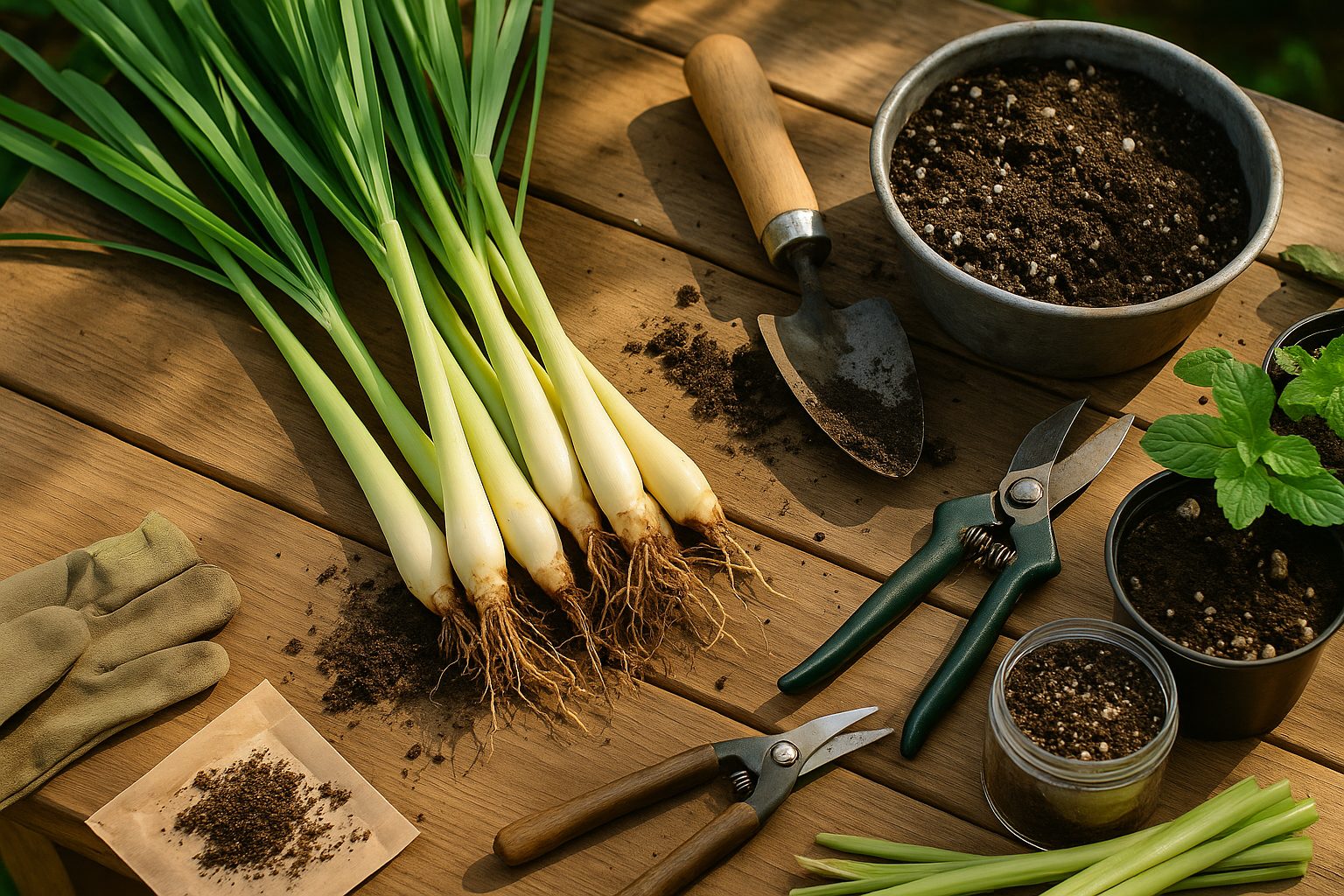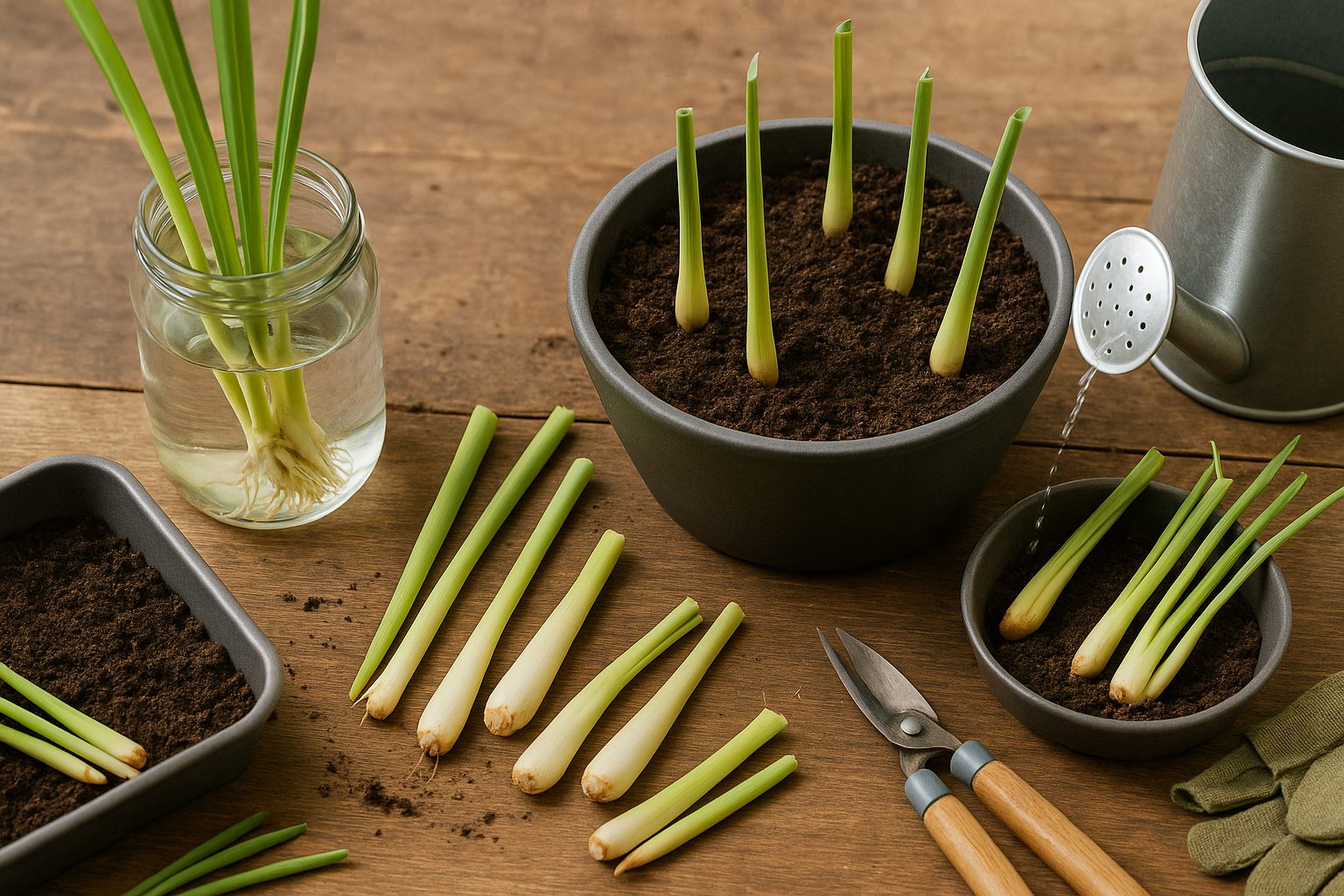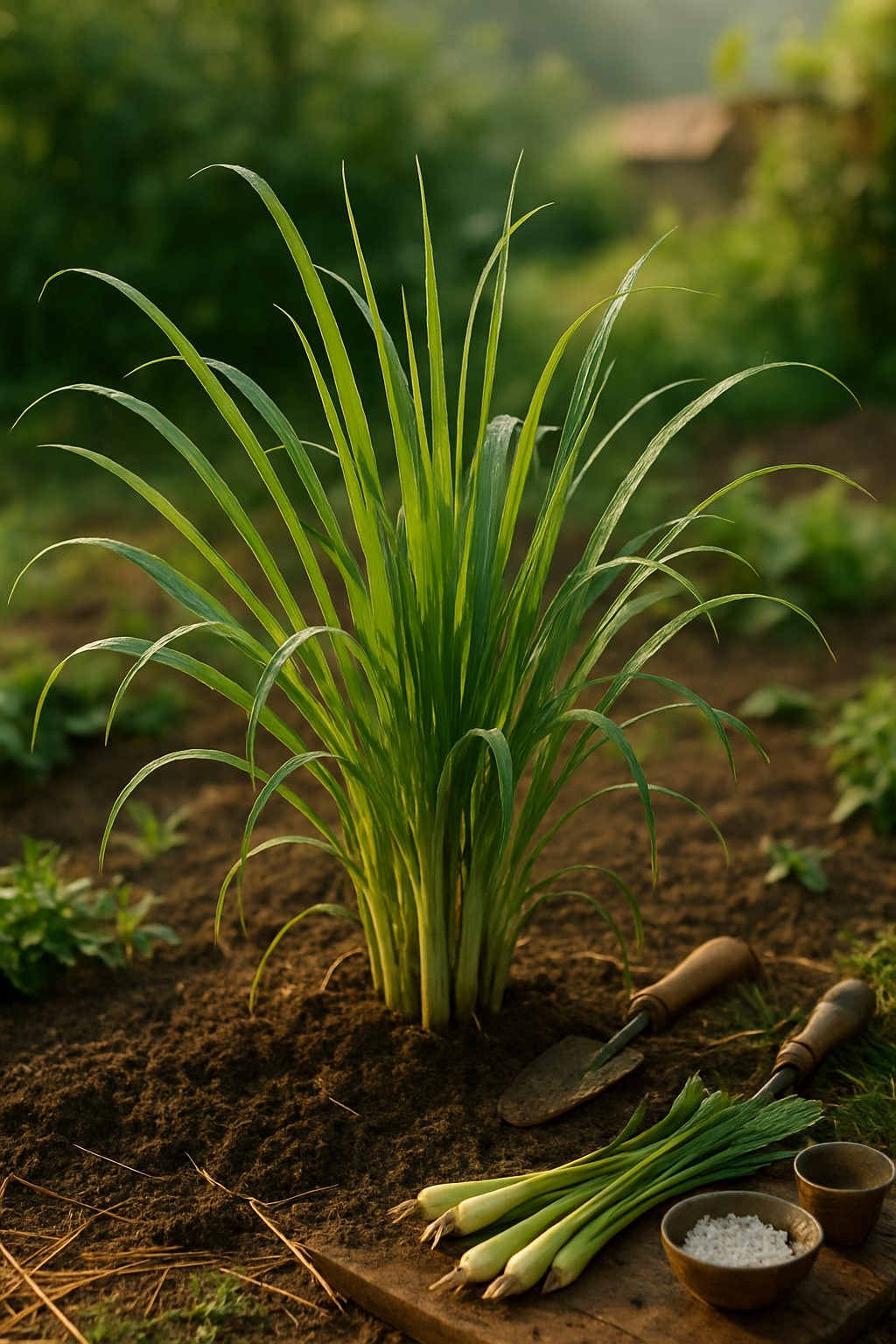Introduction to Lemongrass
If you’ve ever wondered how to grow lemongrass in your own kitchen garden, you’re not alone—this aromatic herb has quickly become a favorite among both novice and experienced gardeners. Lemongrass, known for its tall, slender, pale-green stalks and fresh citrus aroma, is as attractive as it is practical. Not only does it add a beautiful tropical flair to your home or patio, but it’s also a powerhouse in the kitchen and medicine cabinet.
Used in everything from fragrant Thai soups and curries to herbal teas, this versatile plant is packed with antioxidants and has been prized in traditional health remedies for easing digestive issues and even keeping mosquitoes at bay.
What makes lemongrass especially popular for home gardeners is its resilience and minimal care requirements. Its refreshing scent naturally deters pests, and it thrives in pots or garden beds alike. With just a bit of attention—plenty of sunlight, warmth, and regular watering—you can enjoy an endless supply of fresh stalks right at home.
Lemongrass grows best in tropical and subtropical regions but adapts well to many climates, provided it’s protected from frost; in chillier zones, it’s easily overwintered indoors. Started from store-bought stalks or seeds, lemongrass quickly takes root and flourishes, making it a perfect project for beginners.
So, whether you want to spice up your cooking or savor the plant’s spa-like scent, learning how to grow lemongrass is a satisfying, manageable journey that pays off all year round.
Choosing and Preparing Lemongrass for Planting

When choosing lemongrass for planting, start by selecting the freshest stalks possible—these are often found at Asian grocery stores, garden centers, or nurseries. Look for firm, pale-green stalks with intact roots if you can find them. Avoid stalks that feel dry, shriveled, or have brown, mushy spots.
While some grocery store stalks can sprout roots and grow successfully, be aware that others might be treated with growth retardants to extend shelf life, which could reduce your chances of success. If you prefer starting from seeds, look for reputable suppliers and be patient, as lemongrass can be slow to germinate.
Once you have your planting material, focus on preparing the right environment. Lemongrass thrives in rich, loamy soil with excellent drainage—amend the soil with compost and sand if needed to prevent soggy roots. Choose a planting site that gets six to eight hours of direct sunlight daily and stays consistently warm; lemongrass is highly sensitive to frost and cold drafts.
Raised garden beds or large pots work well, especially in cooler climates, as they offer better control over soil, water, and warmth. Before planting, soak stalks in water for about a week to encourage root growth. Once new roots appear, they’re ready to be planted.
With these simple steps, you’ll give your lemongrass the strongest start possible, whether tucked into your garden or grown in pots on a sunny patio.
How to Plant Lemongrass: Step-by-Step

Planting lemongrass is a simple, rewarding process you can start right on your kitchen counter. To root lemongrass stalks, select fresh, healthy stalks from the grocery store with the base intact. Place the stalks upright in a cup or jar with an inch or two of water, changing the water every few days to prevent rot. In about two weeks, you’ll see roots start to form at the base.
Once roots are at least two inches long, transplant each stalk into soil—either in the ground or a roomy container. Lemongrass thrives when spaced about 18 to 24 inches apart, giving its tall grassy leaves plenty of room. Bury the rooted ends about one inch deep in well-draining, rich soil. Water thoroughly after planting and keep soil consistently moist but not soggy for the first few weeks.
Starting from Seed
For those who prefer starting from seed, sow seeds indoors in early spring. Lightly press seeds into damp seed-starting mix, cover them with a thin layer of soil (about 1/4 inch), and keep the tray warm and bright. Seeds usually sprout in 1–3 weeks, and seedlings can be transplanted outdoors after the last frost.
Outdoor and Container Planting Tips
Lemongrass loves warmth, so late spring or early summer is the best time to plant outdoors. If you choose a container, pick one at least 12 inches wide to accommodate the plant’s growth. Whether you plant in the ground or pots, make sure your location gets full sun for robust, flavorful stalks.
During the first month, water frequently to establish strong roots, but avoid waterlogged conditions. With these simple steps, you’ll soon enjoy fresh lemongrass leaves right from your own garden or patio.
Caring for Your Lemongrass Plant
Taking good care of your lemongrass plant means giving it consistent attention throughout the growing season. Start by watering regularly—lemongrass likes moist but not soggy soil. In hot weather, you may need to water every few days; check the soil with your finger, and if the top inch feels dry, it’s time to water.
To boost healthy growth, feed your plant with a balanced, all-purpose fertilizer once a month during spring and summer. Lemongrass also benefits from mulching with straw or compost, which helps retain moisture and keeps weeds at bay. For weed management, hand-pull weeds around the plant’s base to avoid competition for nutrients and water.
Pruning is important: every few months, use sharp scissors or garden shears to trim away any dead or damaged stalks, and cut outer stalks for harvest when they are at least half an inch thick—this encourages the plant to send out fresh, bushy new shoots.
Keep an eye out for common issues like yellowing leaves, which can signal overwatering, poor drainage, or a nutrient deficiency. Let the soil dry out a bit between waterings and consider adding a slow-release fertilizer if yellowing persists.
Aphids and spider mites sometimes attack lemongrass, so inspect leaves regularly and wash away pests with a strong spray of water or use insecticidal soap if needed. If you notice fungal spots or rot, improve air circulation by thinning dense growth and avoid wetting the leaves when watering.
With these straightforward habits—consistent watering, monthly feeding, mulching, regular pruning, and a watchful eye for problems—your lemongrass should stay robust, fragrant, and ready for both the kitchen and the garden all season long.
Harvesting and Using Lemongrass
The best time to harvest lemongrass is when the stalks reach at least half an inch thick, usually four to eight months after planting. For optimal flavor, cut the stalks close to the soil using a sharp knife or garden shears, choosing the outer stalks and leaving the center ones to keep the plant growing.
To encourage regrowth, avoid cutting more than half of the total stalks at once and keep your lemongrass well-watered after harvesting.
Fresh stalks stay good in the fridge for up to two weeks if wrapped in a damp paper towel and stored in a plastic bag. For longer storage, freeze chopped stalks in airtight containers or bags, or dry them in a warm, well-ventilated area and keep them in sealed jars.
Culinary uses for lemongrass are endless:
- Bruise fresh stalks to flavor soups, stews, teas, and curries.
- Finely chop for salads and marinades.
- Dried lemongrass infuses broths beautifully.
- Frozen pieces can be tossed straight into cooking without thawing.
Beyond the kitchen, try brewing lemongrass leaves as a calming tea, or simmer cut stalks on the stove to freshen your home with their citrusy fragrance.
Lemongrass also repels mosquitoes—plant some in patio pots, or rub a bit of the stalk on your skin for a natural deterrent.
With a bit of attention to harvesting and storage, you’ll have a steady supply of this versatile herb right at your fingertips.
Troubleshooting Common Issues
Stunted growth, pest infestations, and cold damage are some of the most common issues gardeners face, but knowing the warning signs can make all the difference.
If your plants stop growing, develop yellow leaves, or look generally weak, stunted growth could be due to poor soil, lack of sunlight, or underwatering. Try improving soil quality with compost, ensuring your plants get enough light, and keeping a consistent watering schedule.
Pest infestations often show up as chewed leaves, sticky residue, or tiny insects on the undersides of leaves. To manage pests, inspect your plants regularly, remove affected leaves, and use gentle pest remedies like insecticidal soap or neem oil.
Cold damage is another frequent problem, revealed by wilted, blackened, or mushy leaves, especially after a cold snap. Protect your plants by covering them with cloth during chilly nights and moving sensitive containers indoors when frost is expected.
Pay close attention to sudden changes in leaf color or texture, as these can signal bigger problems that need prompt action. With a watchful eye and some simple preventative steps, you can keep your plants healthy and thriving all season long.
Tips for Thriving Lemongrass and Final Thoughts
For the healthiest lemongrass, make sure your plants get plenty of sun—six to eight hours a day is ideal, whether outdoors or on a sunny windowsill indoors. If you’re short on garden space, lemongrass thrives in containers; just use a large pot to give roots room to grow and keep the soil consistently moist but never soggy.
Indoors, a south-facing window or supplemental grow lights will help mimic their tropical environment. Regularly snip outer stalks once they’re thick to encourage even more growth and keep plants tidy. Feed lemongrass every few weeks with a balanced liquid fertilizer during the active growing season for optimal yields.
Don’t forget to protect outdoor plants from frost by moving containers inside or harvesting before cold weather strikes. In summary, start with healthy stalks, provide warmth, bright light, and plenty of water, and you’ll have a steady supply of this fragrant herb.
Growing lemongrass at home is surprisingly simple, and with a bit of experimentation, you’ll enjoy the fresh, citrusy flavor in your kitchen all year round—plus the satisfaction of harvesting straight from your own mini garden. Give it a try and see how easy and rewarding it can be!
